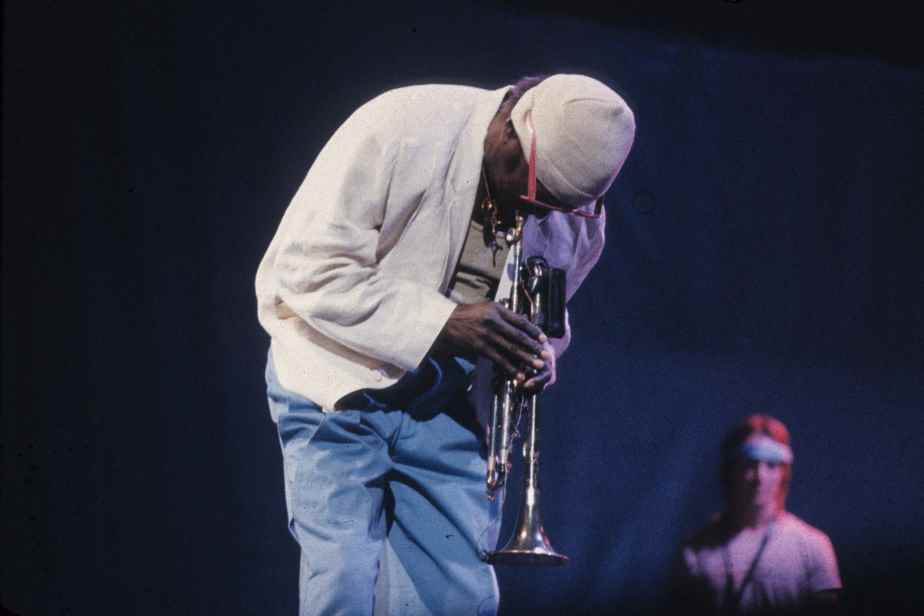“Miles Davis is one of the most important artists of the XXe century, just like Stravinsky and Picasso. He is in this unique class. An exceptional being. »
Posted at 9:00 a.m.
André Ménard, co-founder of the Festival international de jazz de Montréal (FIJM), met the New York master trumpeter a few times in the 1980s. At least often enough for the artist to end up calling him by his first name. … Once. “A chance meeting in Paris,” he recalls. He was coming out of an elevator in the lobby of a hotel. He saw me, came up to me and gave me a “Hi André!”. I was a happy little guy. I will always remember that. »
And he will also always remember the passages of Miles Davis in the metropolis, within the framework of the festival.

PHOTO OLIVIER PONTBRIAND, LA PRESSE ARCHIVES
André Ménard, co-founder of the Montreal International Jazz Festival
Montreal has been a privileged witness to his work and his artistic renaissance.
André Ménard, co-founder of the Montreal International Jazz Festival
He continues: “We were very happy to have him in 1982, he was starting to play again after a few difficult years. But it was a concert where we felt he was a little hesitant, less in exploration or in abandonment. »
Nothing to prevent the organizers from issuing a new invitation to return the following year. “We are talking about Miles Davis anyway, underlines Mr. Ménard. He has an aura around him. It exudes something unique. He reinvented music. Of course we wanted him to come back to play. »
Return of the trumpeter to the FIJM on July 7, 1983. That evening, Miles Davis was no longer the partial artist seen 12 months earlier, explains the co-founder of the FIJM.
We were at [Théâtre] St-Denis, and from the first notes, we understood that the master was in great shape! The revival was complete. Everyone who was at this concert will say it: it was a great moment, a brilliant show.
André Ménard, co-founder of the Montreal International Jazz Festival
Set fire to St-Denis
A landmark concert in the career of Miles Davis, therefore. So much so that, 39 years later, he is back in the news. This concert first made its way to record stores, in vinyl format, last July. It is now at the heart of the CD box released a few days ago and titled That’s What Happened 1982-1985: The Bootleg Series Vol. 7.
There are three discs that retrace his last years at Columbia – a division of Sony Music since – before his jump to Warner Music. On the first two, studio recordings, essays – some successful, others less so – and brushstrokes of certain pieces that will mark the musical canvas of the trumpeter.

PHOTO ROBERT ETCHEVERY, PROVIDED BY THE MONTREAL INTERNATIONAL JAZZ FESTIVAL
Miles Davis at the St-Denis Theater, July 7, 1983
The third is said concert. Nine pieces for over 80 minutes. The electric atmosphere – in the hall and on stage – can be heard. The spectators present are hooked on the notes projected by an energetic Miles Davis, who offers a fusion of funk, blues, soul, but also pop. Refreshing sounds that stem from an assumed love for the music of the newcomers of the time, from Michael Jackson to Cyndi Lauper, via Prince and D-Train.
To set fire – musically speaking, of course – to the St-Denis Theater that evening, Mr. Davis surrounded himself with promising young musicians who would become references in the jazz and rock worlds: guitarist John Scofield, saxophonist Bill Evans, bassist Darryl Jones, drummer Al Foster and percussionist Mino Cinelu.
An all-star team, no less. This is a major element for which this concert was so important. And also a good reason for Sony to choose it and include it in this new box!
André Ménard, about the musicians present on the stage of the Théâtre St-Denis
Listening, the Davis fan will note major moments. We think of the opening piece, Speak (That’s What Happened), which brilliantly launches the funk-synthesized sound of the Davis version of the 1980s, accompanied by the fat and joyful bass of Darryl Jones.
Or by piece What It Is, where Davis fidgets on the synthesizer in the first five minutes before catching his breath forcefully on the trumpet and accompanying a John Scofield in a trance, nothing less. No, it’s no coincidence that these two compositions will find a place on the album Decoywhich will be released the following year.
Let’s dare to write it: this box is aptly named, because the rebirth of Miles Davis, That’s What Happened this July 7, 1983, in Montreal.

Jazz
Miles Davis- That’s What Happened 1982-1985: The Bootleg Series Vol. 7
Miles Davis
Columbia Records

